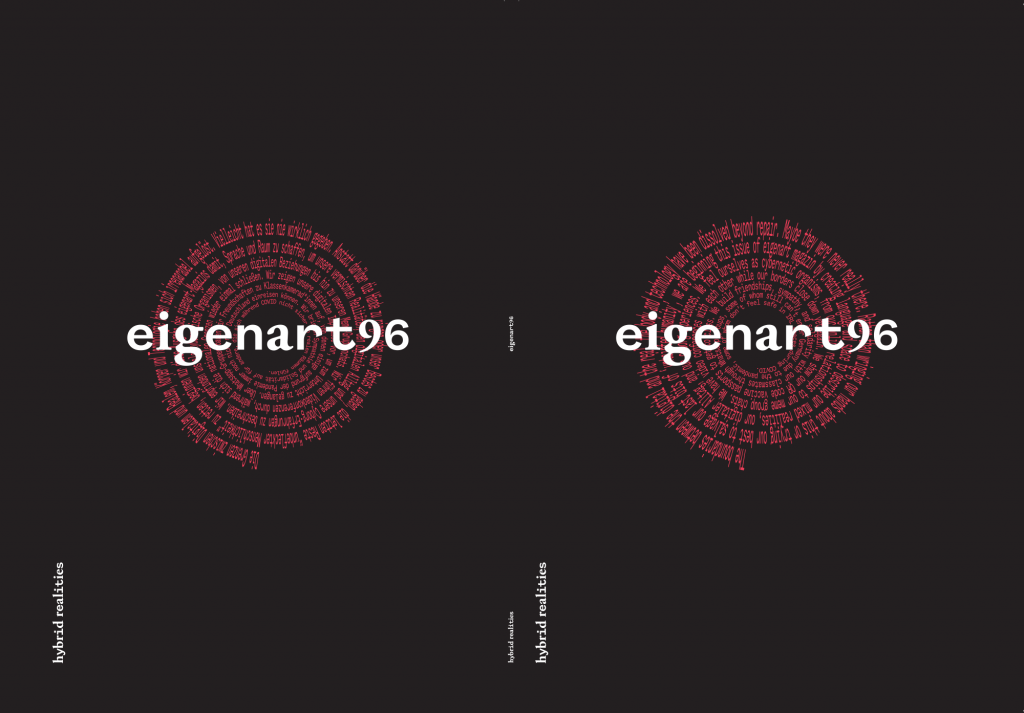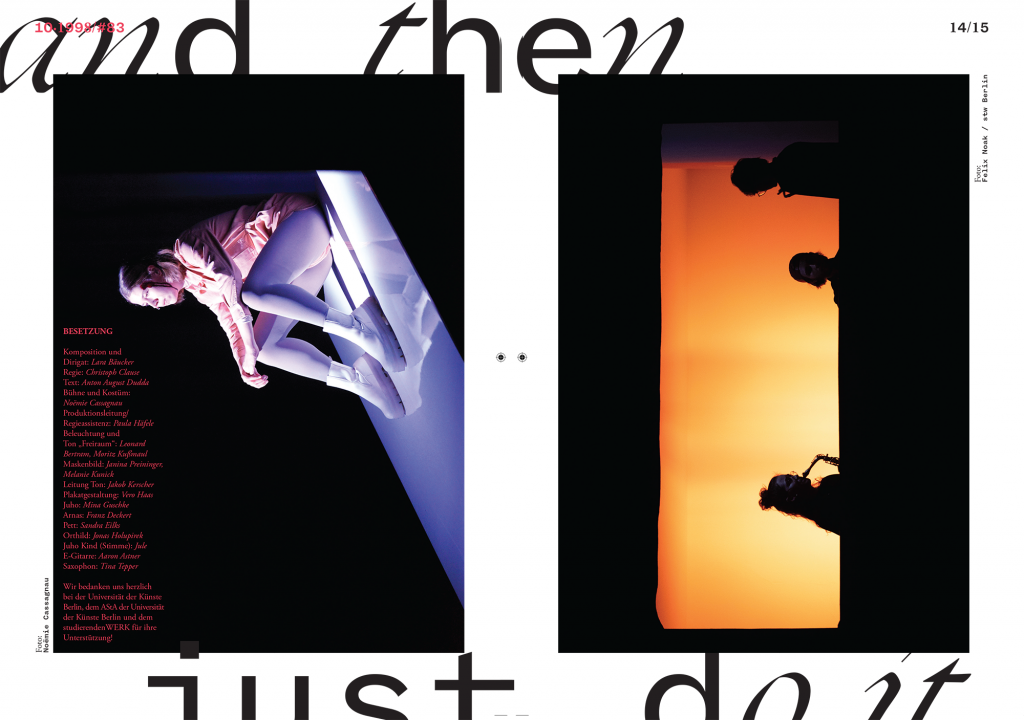
When we think about where we are going, or whether it makes sense to go anywhere, it can feel like a kind of vertigo. With the overwhelm of information and crises today, it feels like we are free-falling though history, with no past to hold onto and no future to understand.
Regardless of the impossibility of answers—or the irrelevance of them—we are forced to make decisions on the fly, as we try to understand what it means to live in hybrid realities, in proximities amidst distances, at the core of a fusion of worlds whose natures are so different to each other that they sometimes seem irreconcilable. And yet here we are: right in the middle of different realities and not quite knowing which way to look.

The beginning of the 90’s, the time when eigenart magazine began to be published, was a strange time when the analogue and the digital began to hybridise at the pace of the masses. Artists and designers dedicated to the world of graphics and publications, who until then had mostly worked in an analogue way and with simple but fundamental resources such as cutting, pasting, and enlarging, began to turn to designing with computers and softwares, which eventually allowed them to explore other types of graphic expressions and communication.
The design of the 96th edition of eigenart returns to the magazine’s archives as a way of iterating on its own past: from the graphics and aesthetics, to the content and the complexity that living in the midst of hybrid realities has meant to UdK students over time. I aimed to show this in its design compositions, typographic fonts, and graphic references.


Each of this magazine’s spreads has a reference number in the upper-left corner which corresponds to the previous editions of eigenart on which the design of those two pages is based. Some of these issues were catalogued with the issue number (e.g. #70) and some simply with the month and year of publication (e.g. 01.1997), so there is always a combination of both formats. These reference numbers are thus the visual expression of a melting reality and a way to reinterpret the potential of eigenart’s archives beyond just its historical value. But it is also an invitation to visit the eigenart archives and to find in them, perhaps, clues that will help us overcome that sense of vertigo.
If the design of this magazine seems somewhat eclectic or different from one page to another, it is no more than a reflection of the ways in which the students of the UdK have been expressing themselves in the magazine since its first edition 31 years ago until today. Maybe we don’t know where we are going, but at least archives can offer us some kind of orientation.

Text and designs by Camilo Baquero Burgos. Camilo is a Master’s student at the Institute for Art in Context and is currently working on the collaborative publishing project Paréntesis.
Archivos y Vértigo: Sobre el Diseño de la Revista eigenart #96

Versión audio
Se siente una especie de vértigo cuando pensamos hacia dónde vamos o si acaso tiene sentido dirigirnos hacia algún lugar. Con las crisis actuales y un desbordamiento de la información, pareciéramos estar cayendo libremente por la historia, sin un pasado al cual aferrarnos ni un futuro que podamos comprender.
Sin importar la imposibilidad de las respuestas -o la irrelevancia de ellas- nos vemos obligados a tomar decisiones sobre la marcha, mientras tratamos de entender lo que significa vivir en realidades híbridas, en cercanías en medio de distanciamientos, en el núcleo de una fusión de mundos cuyas naturalezas son tan distintas, que a veces parecieran irre- conciliables. Y sin embargo aquí estamos: justo en la mitad de distintas realidades y sin saber muy bien hacia dónde mirar.

El principio de los 90’s, la época en la que se empezó a publicar eigenart magazin, fue una época extraña en donde lo análogo y lo digital empezó a hibridar al ritmo de las masas. Artistas y diseñadores entregados al mundo de lo gráfico y de las publicaciones, que hasta entonces habían trabajado mayoritariamente de forma análoga y con recursos simples pero fundamentales como cortar, pegar y ampliar, empezaron a volcar sus diseños dentro de computadores y de softwares, que con el tiempo les permitieron, entre otras cosas, explorar diferentes maneras de expresión gráfica y de comunicación.
El diseño de la 96a edición de eigenart vuelve a sus archivos como una forma de iterar su propio pasado: desde su gráfica y estética, hasta su contenido y la complejidad que ha supuesto a lo largo del tiempo vivir en medio de realidades híbridas para los estudiantes de la UdK. Esto lo intento mostrar con las composiciones, fuentes tipográficas y re- cursos gráficos usados en esta edición.

Cada doble-página cuenta así con un número de referencia en la esquina superior izquierda, el cual corresponde a las ediciones anteriores de eigenart en las cuales está basado el diseño de esas páginas específicas. Algunas de estas ediciones fueron catalogadas con el número de la edición (ej: #70) y algunas simplemente con el mes y el año de su publicación (ej: 01.1997), por lo que siempre hay una combinación entre ambos formatos. Estos números de referencia son por ello la expresión de una realidad fundiéndose y una forma de reinterpretar el potencial de los archivos de eigenart, más allá de sólo su valor histórico. Pero también es una invitación abierta a visitar los archivos de eigenart y a encontrar en ellos, quizás, pistas que nos ayuden a superar la sensación de vértigo.
Si el diseño de esta revista parece por momentos algo ecléctico o diferente de una página a otra, no es entonces más que un reflejo de las formas en las que los estudiantes de la UdK se han venido expresando en la revista desde su primera edición, hace 31 años, hasta hoy. Quizás no sabemos hacia dónde nos dirigimos, pero me gustaría creer que los archivos nos ofrecen una suerte de orientación.






